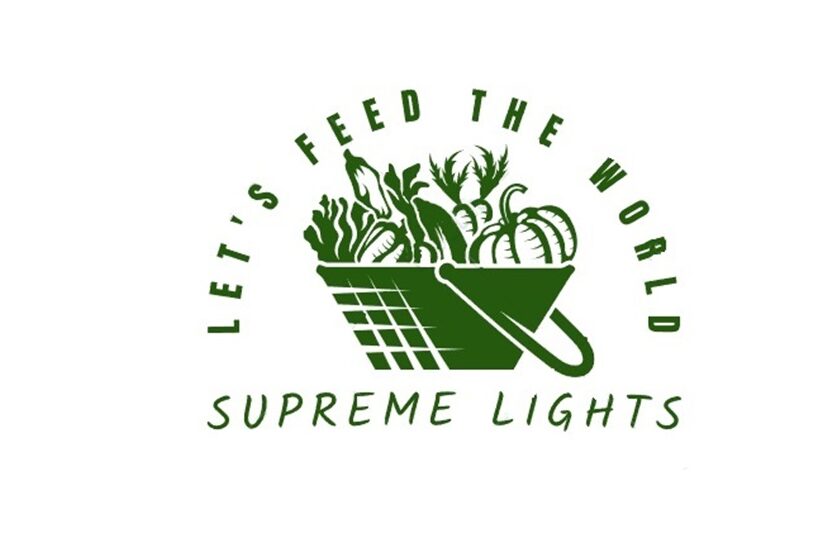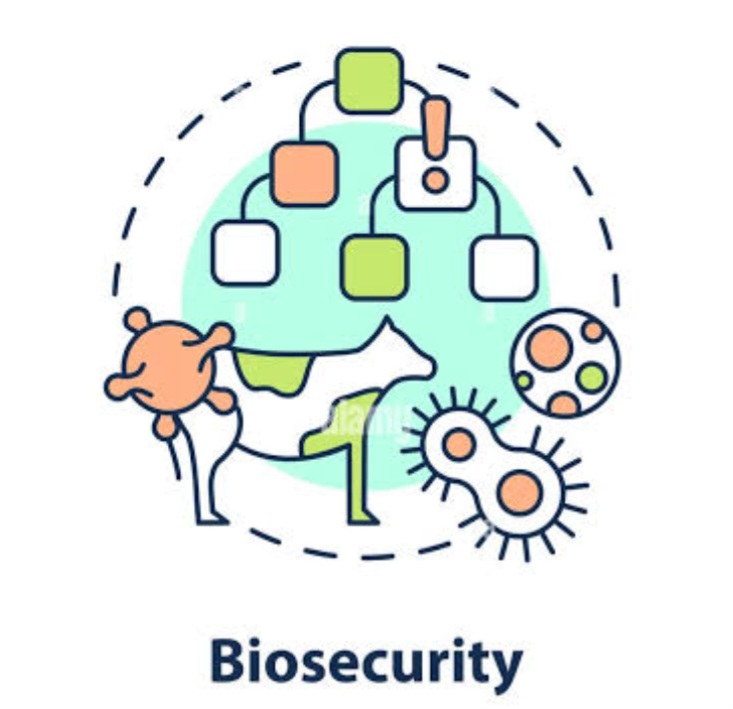
As it is said that biology does not respect borders , so do diseases, pests and pathogens spread are no respecter of any environment and country.
Strong quarantine measures with geographic Isolation coupled with world class research can protect crops and animals including human that consume them from some of the serious impacts posed by pests, diseases and pathogens that are circulating all over the world. The health of every living creatures and non creatures such as human, animals and plants and their environment are connected, therefore, disease transmission is inevitable.
Good biosecurity should be practised at all times, not just during a disease outbreak but before the outbreak should occur. Taking the right measures in the early stages of an outbreak, can help prevent or reduce it’s spread.
Biosecurity is a set of policies and practices that aim to prevent the spread of harmful organisms (e.g. viruses, bacteria, and pathogens etc.) and protect people, animals, plants, and the environment. It can also be defined as the act of protecting human, animals and livelihood from infectious diseases. This prevention practices can be intentionally or unintentionally carried out. Biosecurity, a holistic approach to safety, include policies and regulations to protect humans, food, agriculture, and the environment from potential biological threats intended to harm innovations, standards, and practices that are utilized to secure pathogens, poisons, and delicate advancements from unapproved access, abuse, theft, or deliberate discharge. The term also includes biological threats to people, including those from pandemic diseases and bioterrorism.
For example, in agriculture, biosecurity is aimed at protecting food crops and livestock from pests, invasive species, and other organisms not conducive to the welfare of the human population.
Another example is the COVID-19 pandemic. It is a recent example of a threat for which biosecurity measures have been needed in all countries of the world.
A decent biosecurity program should be provided to address the danger of introducing new infections or disease entry and spread on a farm, stable, in a home or country.
Biosecurity encompasses a range of physical structures, equipment, and protocols that are designed to reduce the risk of harmful pathogens entering the farm and causing disease outbreak. All entry to animal farm must have a detailed biosecurity plan that protect the health and safety of the animals. The term includes biological threats to people, including those from pandemic diseases and bioterrorism.
DIFFERENT DEFINATION OF BIOSECURITY BY DIFFERENT COUNTRIES AND ORGANIZATIONS
Various disciplines, professions, organizations and countries have different definitions for the term “biosecurity”. The definition have sometimes been broadened to embrace other concepts, and it is used for different purposes in different contexts. The term was first used by the agricultural and environmental communities to describe various preventive measures taken against threats from naturally occurring diseases and pests. Later the term expanded to introduced species.
In 2010, Australia and New Zealand incorporated this definition within their legislation.
In 2001, the United State National Association of State Departments of Agriculture (NASDA) defined biosecurity as “the sum of risk management practices in defense against biological threats”, and its main goal as “protect(ing) against the risk posed by disease and organisms”.
In 2006, the National Academy of Sciences defined biosecurity as “security against the inadvertent, inappropriate, or intentional malicious or malevolent use of potentially dangerous biological agents or biotechnology, including the development, production, stockpiling, or use of biological weapons as well as outbreaks of newly emergent and epidemic disease”.
In Encyclopedia of Microbiology (Third Edition), 2009. Biosecurity was defined as the process of keeping potentially dangerous microorganisms out of the hands of individuals who want to use them for nefarious purposes.
In 2010, the World Health Organization (WHO), in her information note describe biosecurity as a strategic and integrated approach to analysing and managing relevant risks to human, animal and plant life and health and associated risks for the environment. In another document, it describes the aim of biosecurity being “to enhance the ability to protect human health, agricultural production systems, and the people and industries that depend on them”, with the overarching goal being “to prevent, control and/or manage risks to life and health as appropriate to the particular biosecurity sector”.
In the US, the National Science Advisory Board on Biosecurity was created in 2004 to provide biosecurity oversight of “dual-use research”, defined as “biological research.
In Veterinary Medicine (Eleventh Edition), 2017.
Biosecurity was defined as “the outcome of all activities undertaken by an entity to preclude the introduction of disease agents into an area that one is trying to protect.”. Biosecurity was further defined as the intended result of efforts to protect animals and humans from disease-causing materials of biological origin.
Veterinarians traditionally view biosecurity as the set of management practices to protect animals – livestock or others of economic value – against microbial threat, some of which may be inadvertently introduced by humans. “Biosecurity” takes on an entirely different meaning in international political agreements such as the Biological and Toxin Weapons Convention of 1975. Here, biosecurity was refered to as measures to prevent the research and development of microorganisms or their products for hostile purposes. And it is not too far a reach to think of biosecurity as the prevention of infectious disease – and specifically communicable infectious disease – in humans.
The National Academies of Science define biosecurity as ‘security against the inadvertent, inappropriate, or intentional malicious or malevolent use of potentially dangerous biological agents or biotechnology, including the development, production, stockpiling, or use of biological weapons as well as outbreaks of newly emergent and epidemic disease’.
And lastly, the US Department of Health and Human Services defined biosecurity as the protection, control of, and accountability for high-consequence biological agents and toxins and critical relevant biological materials and information within laboratories to prevent unauthorized possession, loss, theft, misuse, diversion, or intentional release.
GOALS OF BIOSECURITY
1. Reduce the risk of infectious diseases spreading to and among livestock
2. Protect food, agriculture, and the environment from biological threats
3. Prevent the theft or abuse of pathogens, poisons, and other sensitive advancements
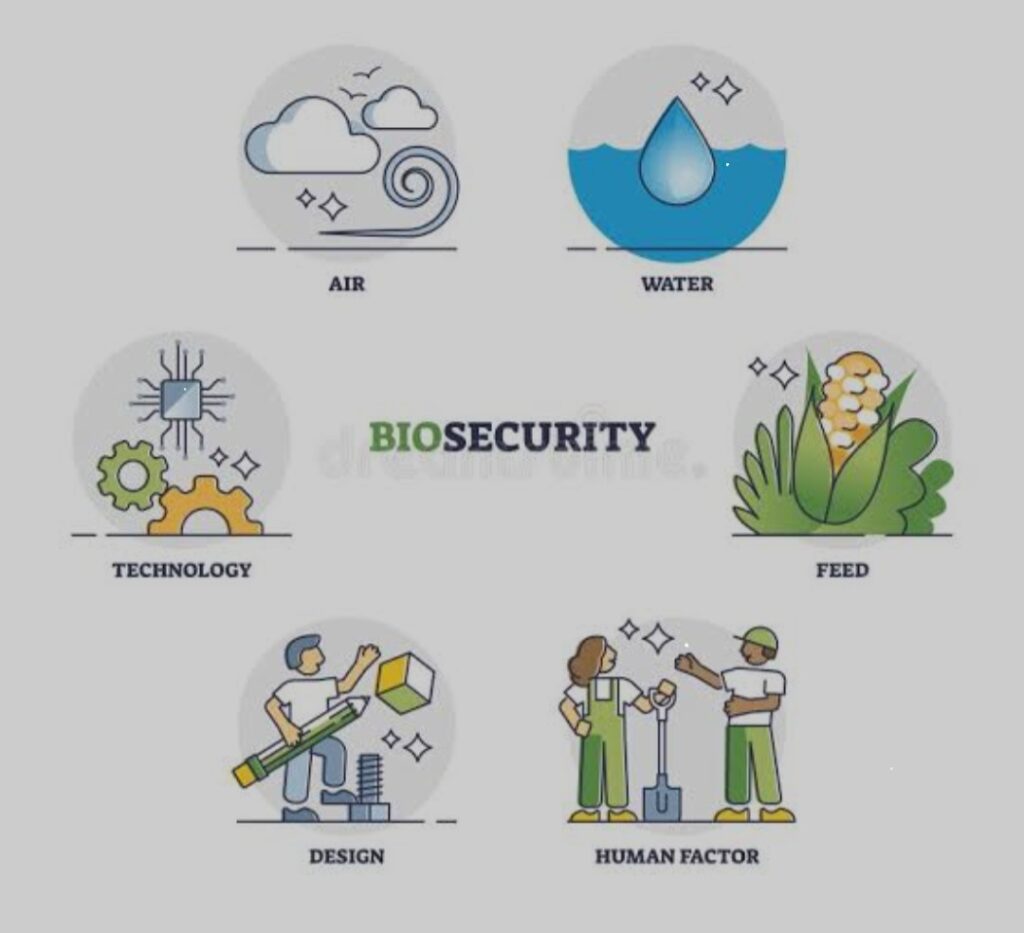
PRINCIPLES OF BIOSECURITY
1. BIO-EXCLUSION: Preventing outside agents from entering a facility and spreading among the animal population
2. BIO-MANAGEMENT: Preventing the spread of disease within a facility
These two biosecurity principles can further be divided into the following biosecurity subprinciples:
a. ISOLATION: Confinement of animals in controlled environments to exclude disease vectors
b. SANITATION: Measures to ensure cleanliness
c. TRAFFIC CONTROL: Measures to control the movement of people and animals
d. MANURE TREATMENT: Measures to treat animal waste
e. DISINFECTANTS: Measures to use disinfectants to prevent the spread of disease
BENEFITS OF BIOSECURITY
1. Protects the health of animals: Biosecurity is a proven method that can help to promote the health of flock.
2. Protects the safety of food,
3. Prevents the spread of exotic diseases.
4. Limits the spread of endemic diseases.
5. Biosecurity is a measures taken to protect livestock from harmful biological agents, like viruses, bacteria, parasites, etc.
6. Biosecurity is the cheapest and most effective means of disease control available.
COMPONENTS OF BIOSECURITY
In general, there are three major components of biosecurity. They include:
1. Isolation
2. Traffic Control
3. Sanitation
1. Isolation refers to the confinement of animals within a controlled environment.
2. Traffic control is not only about the supply of birds and goods, but also about the visits of people to the farm and the traffic patterns within the farm.
3. Sanitation addresses the cleaning and disinfection of materials, equipment and people entering the farm, and the “clean” way of working on the farm.
SOME BIOSECURITY MEASURES
Agriculturist, biologist, laboratories, and countries etc uses various biosecurity measures to counter biosecurity risks. Such biosecurity measures include compulsory terms such as;
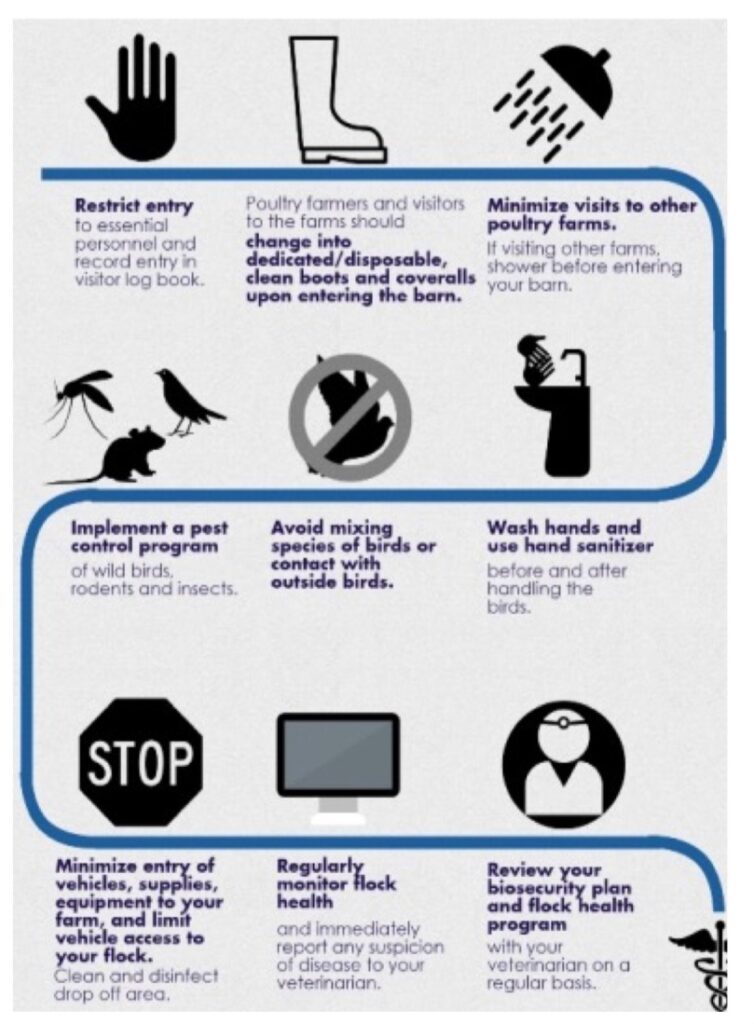
a. QUARANTINE: These are put in place by countries to minimise the risk of invasive pests or diseases arriving at a specific location that could damage crops and livestock as well as the wider environment.
Quarantine simply means separating newly arrived animals from the main farm.
The term is today taken to include managing biological threats to people, industries or environment. These may be from foreign or endemic organisms ( organisms that are consistently present but limited to a particular region), but they can also extend to pandemic diseases (this is when a new disease or new strain of an existing disease spreads worldwide. For example, Viral respiratory diseases, such as new influenza viruses or COVID-19 ) and the threat of bioterrorism, both of which pose threats to public health.
b. BIOEXCLUSION: Preventing the introduction of disease by keeping out new pathogens
c. BIOCONTAINMENT: Preventing the spread of disease within or between groups of animals
d. GOOD HYGIENE: Maintaining good hygiene practices
e. SEGREGATION OF SPECIES: Separating different species of animals
f. PROTECTION FROM WILD ANIMALS AND INSECTS: Protecting animals from wild animals and insects
g. WASTE MANAGEMENT: Managing waste appropriately
h. STRUCTURAL BIOSECURITY: Designing the farm layout, perimeter fencing, drainage, and more
i. DISINFECTING: Cleaning equipment and vehicles
j. RESTRICTING ACCESS: Limiting access to agricultural fields
k. STERILIZING: Regularly sterilizing lab equipment
L. BIOSAFETY LEVELS: Implementing biosafety levels in microbiology laboratories.
Some ways employed to ensure that these measures are effective to promote biosecurity on the farm include:
a. Restrict access to the farm and flocks. It is important to keep out disease from the outside surrounding.
b. Limit the number of people that come in contact with the farm flocks. All visitors should always sanitize their hands and clean their shoes properly. They should be provided with clean company shoes, clothes and footbath before visiting in the farm.
c. Limit any possible contact with wild birds as they can carry disease. This is especially true for migratory waterfowl. When the birds have outdoor access, keep them in a screened area that prevents them from any contact with wild birds.
d. Keep predators and rodents out. Enclose all flock properly and consider closing the facilities available during the nighttime.
e. Fences should be buried deep enough to ensure that predators like foxes, snakes, rodents, badgers and coyotes etc do not get in.
f. Have a proper rodent and pest control scheme in place, monitor your traps daily.
g. Provide proper nighttime housing, with proper ventilation. It should be attractive for the livestock to spend the night.
h. Keeping things clean
i. Always keep livestock feed and water clean.
j. Keep an eye on the bedding in the livestock pen. Birds for example are often consuming things off the ground, which could result in ingesting harmful parasites, bacteria or viruses that may have come from an infected bird. Always remove wet bedding and replace it with fresh dry bedding. This also includes when bedding smells bad, is damp or has become dirty. Examples can be found in birds carrying Marek’s disease and the Avian Influenza virus that can be spread through contact with droppings.
k. Regular cleaning helps to prevent the spread of diseases. Apply disinfectant when cleaning the pen. Disinfectants are not effective if they are applied over caked on dirt, manure, or bedding.
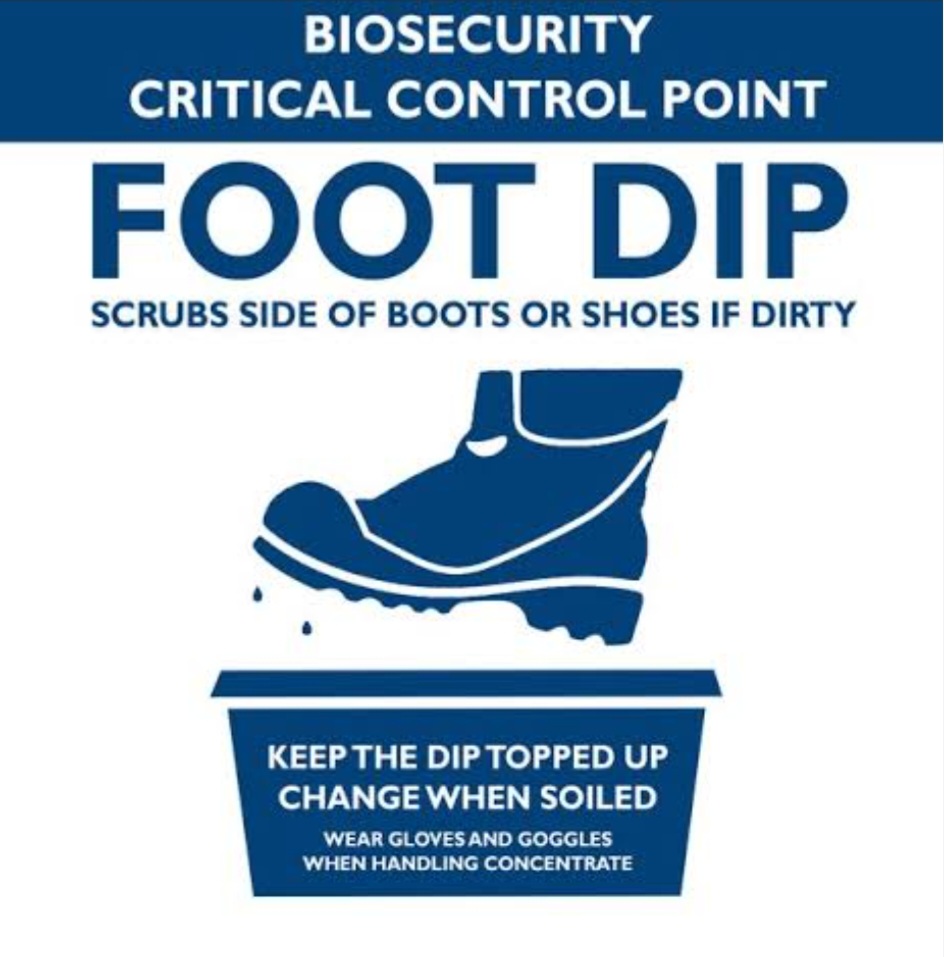
l. Vehicles, clothing and other equipment can all carry disease. When the farmer and his farm workers have been in contact with other livestock and birds, they should ensure that any items that could have been in contact with the flocks are cleaned thoroughly.
m. Footwear (shoes, boots, clogs) can be a major source of transferring disease. Always wash and disinfect all shoes before coming in contact with livestock like poultry.
n. After visiting another farm, farmers should make sure that they take a shower and change all their clothes before visiting their own livestock again.
o. When introducing new animal into an existing flock, isolate them first, to check if they have not picked up any new disease.
p. Try to prevent mixing species. Especially turkeys are rather susceptible to fowl diseases.
q. Limit visitors entering the barns
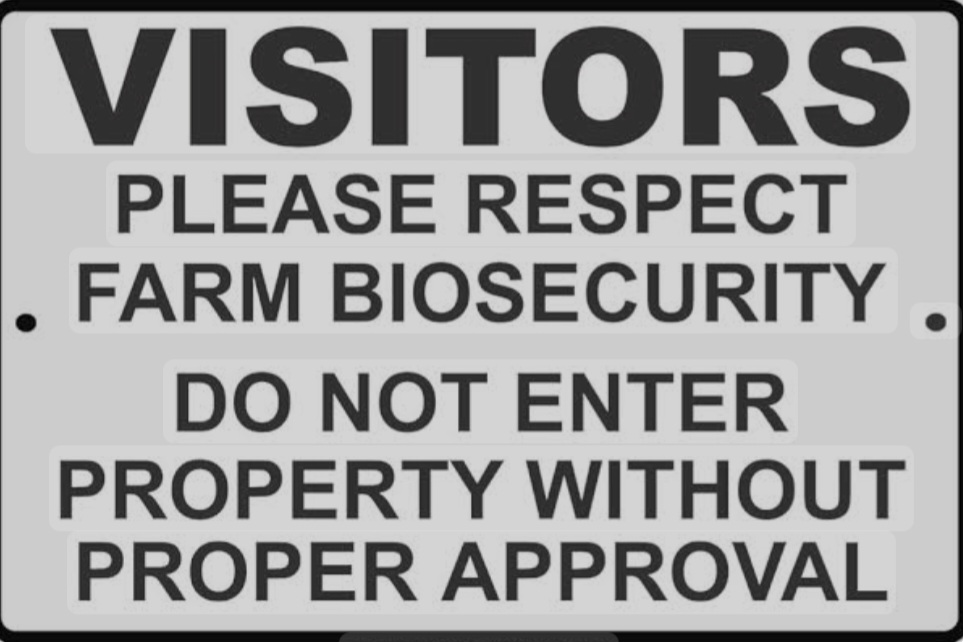
r. Try to limit exchanges in equipment, tools or supplies with other farmers. As diseases can be easily spread by sharing. When sharing is necessary, make sure to clean and disinfect before and after it reaches another property.
s. Never share items that cannot be properly cleaned, such as wooden pallets, fresh litter and cardboard egg cartons. etc
VARIOUS AREAS OF THE ENVIRONMENT THAT REQUIRES BIOSECURITY MEASURES.
1. Animal biosecurity: Any disease outbreak or pest and pathogen infestation can pose a risk to farm animals, other animals, humans, or the safety and quality of a food product. Thus, need for biosecurity. Animal biosecurity is the practice of preventing the spread of disease among animals and to humans. Such animals may be land, aquatic and arboreal animals. It involves a combination of physical and management measures to reduce the risk of disease introduction, establishment, and spread.
It encompasses the prevention and containment of various disease agents in a specific area in the farm.
Biocontainment refers to the control of disease agents already present in a particular area and work to prevent transmission. It works to improve specific immunity towards already present pathogens.
Animal biosecurity may protect organisms from infectious agents or noninfectious agents such as toxins or pollutants, and can be executed in areas as large as a nation or as small as a local farm.
Animal biosecurity takes into account the following:
a. Epidemiological triad for disease occurrence
b. The individual host,
c. The disease, and
d. The environment contributing to disease susceptibility.
The best practices any livestock farmer can emback upon to prevent disease transmission from his animals to himself is through avoidance or segregation. But for animals that are imported and exported across states and country borders, biosecurity measures are needed to reduce unavoidable risk.
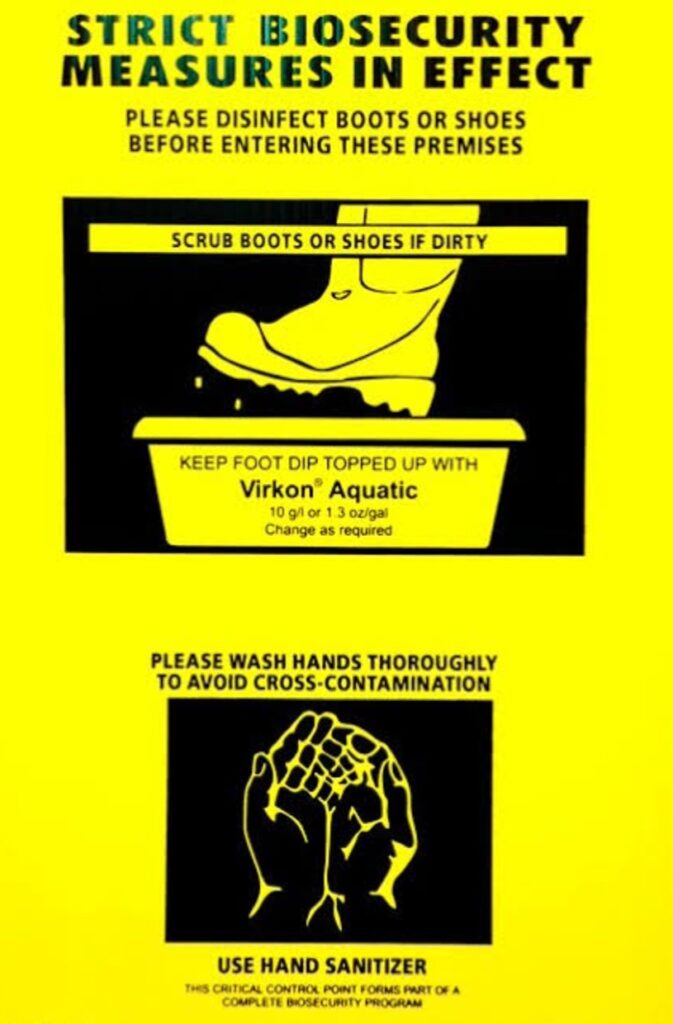
TYPES OF ANIMAL BIOSECURITY
The are three Levels or types of Biosecurity of Animals
-Conceptual Biosecurity
-Structural Biosecurity and
-Procedural Biosecurity.
These are the three components of biosecurity program in livestock rearing. These components are directed at preventing infectious disease transmission within and across farms, companies, facilities, regions, countries, and continents.
CONCEPTUAL BIOSECURITY OF ANIMALS: This is the primary level of biosecurity. It is a biosecurity carried out around the location of animal facilities and their various components. The most effective method to reduce risk is by physical isolation. When facilities are to be erected on farms, farmers should give consideration to biosecurity measures around the facilities or farms. These facilities/farms should not be located in close proximity to other farms or public roads, especially when the area has a high density of animal facilities or next to slaughterhouses, live-animal markets, agricultural fairs, or animal exhibits. Other isolation methods that can be used include limiting the use of common vehicles and facilities; limiting access by personnel not directly involved with the operation; and controlling the spread of disease by vermin, wild animals, and wind.
STRUCTURAL BIOSECURITY OF ANIMALS: This is a secondary level of biosecurity. It involves providing physical factors such as farm layout, perimeter fencing, drainage, number/location of changing rooms, presence of showers, air filtration systems, enclosed load-outs, and housing design on the farm.
PROCEDURAL BIOSECURITY OF ANIMALS: This is a tertiary level of biosecurity. It involves routine procedures used to prevent introduction (bioexclusion) and spread (biocontainment) of infection within a facility. For examples, taking a shower or changing footwear and personal clothes with farm-dedicated clothes before entry into the farm, washing hands, and disinfecting equipment at the point of entry.
2. HUMAN HEALTH
Direct threats to human health may come in the form of epidemics or pandemics, such as the 1918 Spanish flu pandemic and other influenza epidemics, MERS, SARS, or the COVID-19 pandemic, or they may be deliberate attacks (bioterrorism). Therefore, biosecurity is a measure used to protect human health by preventing the spread of harmful organisms, such as viruses and bacteria, that can cause disease.
It prevent the introduction of pathogens into new environments and reduce the spread of pathogens that are already present. It also protect food crops and livestock from pests and diseases that could harm humans.
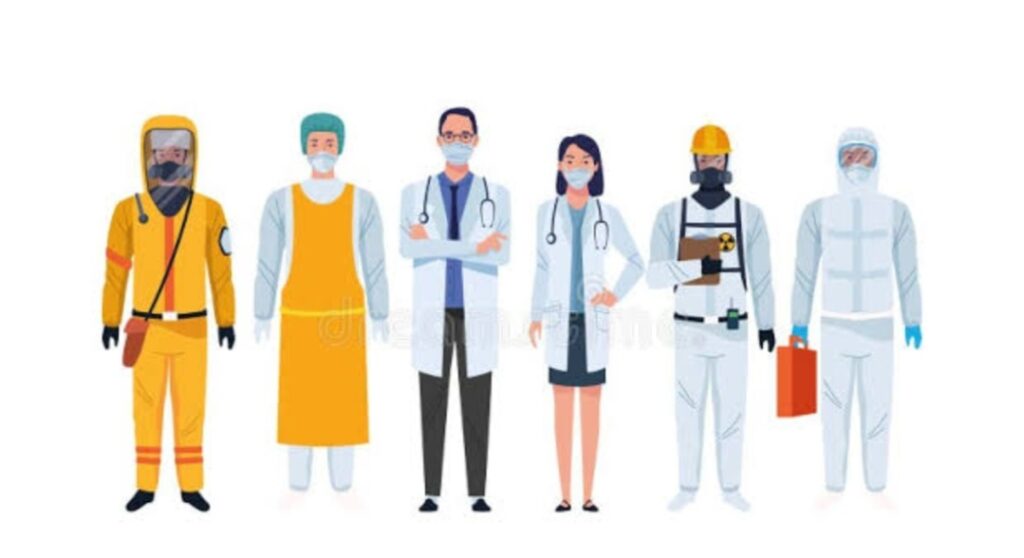
In the case of bioterrorism, biosecurity measures protect against biological threats that could be used for terrorism. It also protects the environment and other living things.
The country/federal and/or state health departments are usually responsible for managing the control of outbreaks and transmission and the supply of information to the public.
3. MEDICAL COUNTERMEASURES
Medical countermeasures (MCMs) are products such as biologics and pharmaceutical drugs that can protect from or treat the effects of a chemical, biological, radiological, or nuclear (CBRN) attack or in the case of public health emergencies. Or MCMs can be refered to as a biosecurity tool used to protect against or treat the effects of a biological, chemical, radiological, or nuclear (CBRN) attack. MCMs can also be used to diagnose and prevent symptoms associated with CBRN attacks or threats.
Some examples of medical countermeasures used as a biosecurity measures include:
Vaccines, antimicrobials,
antibody preparations,
ventilators, and personal protective equipments.
ORGANIZATIONS INVOLVED IN SETTING BIOSECURITY STANDARDS
Various international organisations, international bodies and legal instruments and agreements make up a worldwide governance framework for biosecurity.
Some of these organisations include : the Codex Alimentarius Commission (CAC), the World Organisation for Animal Health (OIE) and the Commission on Phytosanitary Measures (CPM) whom have developed standards that have become international reference points through the World Trade Organization (WTO)’s Agreement on the Application of Sanitary and Phytosanitary Measures (SPS Agreement), created in 1995. This agreement requires all members of the WTO to consider all import requests concerning agricultural products from other countries. These measures covered by the agreement aim at the protection of human, animal or plant life or health from certain risks.
Other important global and regional agreements include the International Health Regulations (IHR, 2005), the International Plant Protection Convention (IPPC), the Cartagena Protocol on Biosafety, the Codex Alimentarius, the Convention on Biological Diversity (CBD) and the General Agreement on Tariffs and Trade (GATT, 1947).
The UN Food and Agriculture Organization (FAO), the International Maritime Organization (IMO), the Organisation for Economic Co-operation and Development (OECD) and WHO are the most important organisations associated with biosecurity.
The IHR is a legally binding agreement on 196 nations, including all member states of WHO. Its purpose and scope is “to prevent, protect against, control, and provide a public health response to the international spread of disease in ways that are commensurate with and restricted to public health risks and that avoid unnecessary interference with international traffic and trade”, “to help the international community prevent and respond to acute public health risks that have the potential to cross borders and threaten people worldwide”.
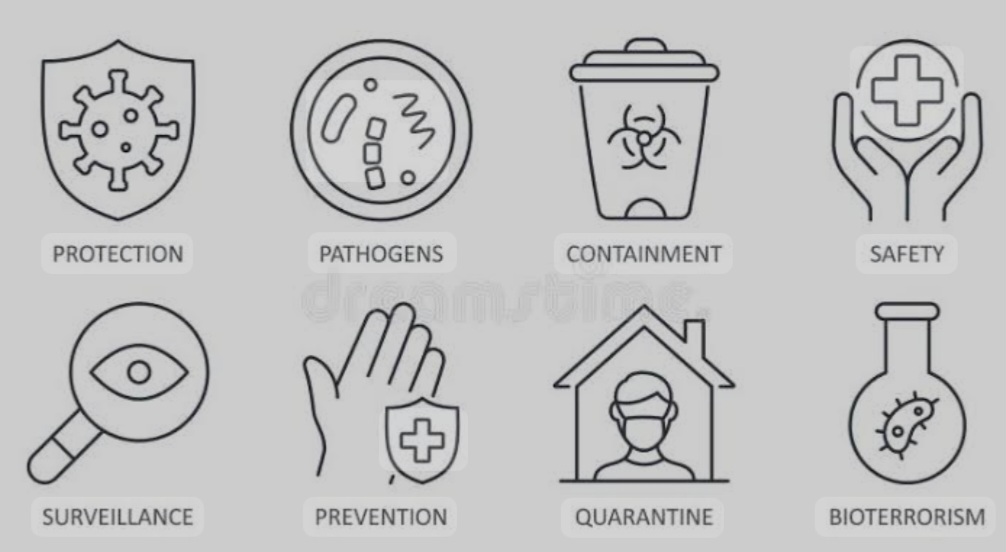
In conclusion, biosecurity is an important part of keeping farm animals and human safe and healthy. An effective biosecurity program will have its positive impact on the economic performance of the flock. As mentioned above, simple measures such as cleaning carefully and regularly, limiting contact from visitors, and being careful not to bring disease home can be taken to promote biosecurity on the farm. Biosecurity is crucial to the success of any farming operation.
